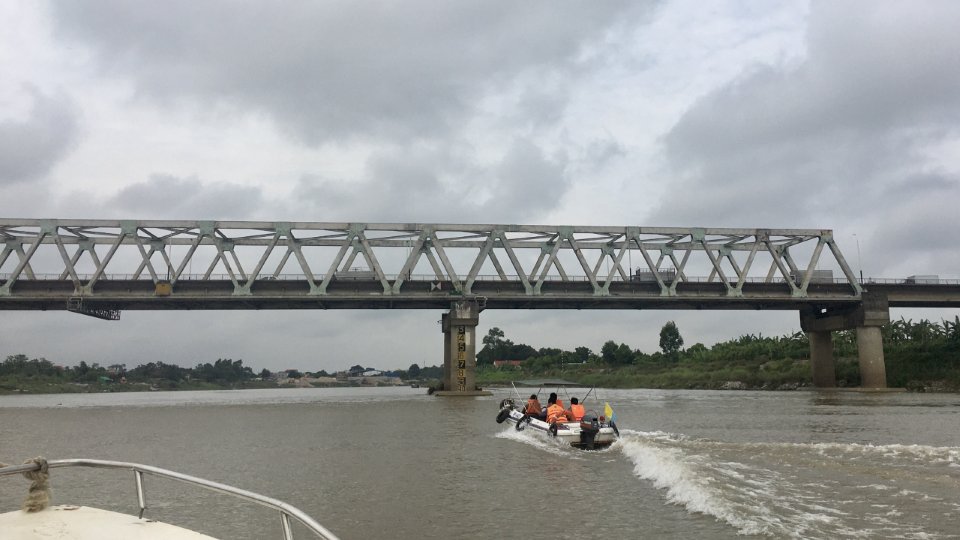What are the technical requirements of collision avoidance in Vietnam?
Below is the content specified in Circular 40/2010/TT-BGTVT on traffic circulation and collision avoidance on inland waterways in Vietnam.

What are the technical requirements of collision avoidance in Vietnam? (Internet image)
Article 8 of Circular 40/2010/TT-BGTVT stipulates the technical requirements of collision avoidance in Vietnam as follows:
- Standing stations for collision avoidance
+ Standing stations for collision avoidance shall be situated on the same side as stations for traffic circulation in the upper course.
+ In case of collision avoidance not in combination with traffic circulation, standing stations shall be located no more than 300 meters away from construction sites to the upper course section.
- Standing signals for collision avoidance
+ In case of standing collision avoidance in combination with traffic circulation, utilize present signaling systems used for traffic circulation.
+ In case of independent collision avoidance, signaling systems shall be adjusted depending on practical conditions.
- Information signs shall be mounted on poles outside of standing stations for collision avoidance. The first signs shall be located no more than 800 meters away (in the upper course) and 500 meters away (in the lower course) of standing stations;
- Parking allowed signs shall be installed on land in the middle of the waters for vehicles to park while waiting to cross the channels (if installation on land is not possible, use buoys for limiting the waters to install);
- Order of sign installation is as follows: instruction signs, prohibition signs, restriction signs and towage regulation signs.
- Standing vehicles and personnel for collision avoidance
+ Vehicle:
- Each standing station must have at least 1 vessel with capacity of 150 - 250 horsepower (CV) and at least 1 speedboat with capacity of 25 - 40 horsepower (CV);
- In areas with complicated or dangerous channel formation or with high vehicle density, may assign more vessels, speedboats and crane vessels ≥ 40 tonnes together with equipment and divers to evacuate vehicles.
+ Personnel on vehicles and equipment:
Planning of personnel on vehicles and equipment shall conform to applicable regulations and law, in which fundamental standing personnel for collision avoidance shall be as follows:
- Standing commander for collision avoidance (rank 4-5): 1 person/shift;
- Standing employee for collision avoidance (rank 3): 3 people/shift;
+ Other fundamental tools and equipment for 1 station include:
|
- Standing station sign: |
01 piece; |
|
- Megaphone: |
1 set/vehicle; |
|
- Flag (burgee): |
2 pieces/vehicle; |
|
- Medicine cabinets: |
1 piece; |
|
- Walkie-talkies (telephone): |
1 set/vehicle; |
|
- Flashlight: |
3 pieces/vehicle; |
|
- Emergency medical aids: |
satisfactory to regulations and law; |
|
- Binocular: |
01 piece. |
More details can be found in Circular 40/2010/TT-BGTVT, which comes into force from February 14, 2011.
Nguyen Phu
- Key word:
- collision avoidance
- Vietnam
- Number of deputy directors of departments in Vietnam in accordance with Decree 45/2025/ND-CP
- Cases ineligible for pardon in Vietnam in 2025
- Decree 50/2025 amending Decree 151/2017 on the management of public assets in Vietnam
- Circular 07/2025 amending Circular 02/2022 on the Law on Environmental Protection in Vietnam
- Adjustment to the organizational structure of the Ministry of Health of Vietnam: Certain agencies are no longer listed in the organizational structure
- Vietnam aims to welcome 22-23 million international tourists in Vietnam in 2025
-

- Number of deputy directors of departments in Vietnam ...
- 15:04, 05/03/2025
-

- Cases ineligible for pardon in Vietnam in 2025
- 14:43, 05/03/2025
-

- Decree 50/2025 amending Decree 151/2017 on the ...
- 12:00, 05/03/2025
-

- Circular 07/2025 amending Circular 02/2022 on ...
- 11:30, 05/03/2025
-

- Adjustment to the organizational structure of ...
- 10:34, 05/03/2025
-

- Notable new policies of Vietnam effective as of ...
- 16:26, 11/04/2025
-
.Medium.png)
- Notable documents of Vietnam in the previous week ...
- 16:21, 11/04/2025
-
.Medium.png)
- Notable documents of Vietnam in the previous week ...
- 16:11, 02/04/2025
-
.Medium.png)
- Notable new policies of Vietnam to be effective ...
- 16:04, 02/04/2025
-
.Medium.png)
- Notable new policies of Vietnam effective from ...
- 14:51, 21/03/2025
 Article table of contents
Article table of contents
